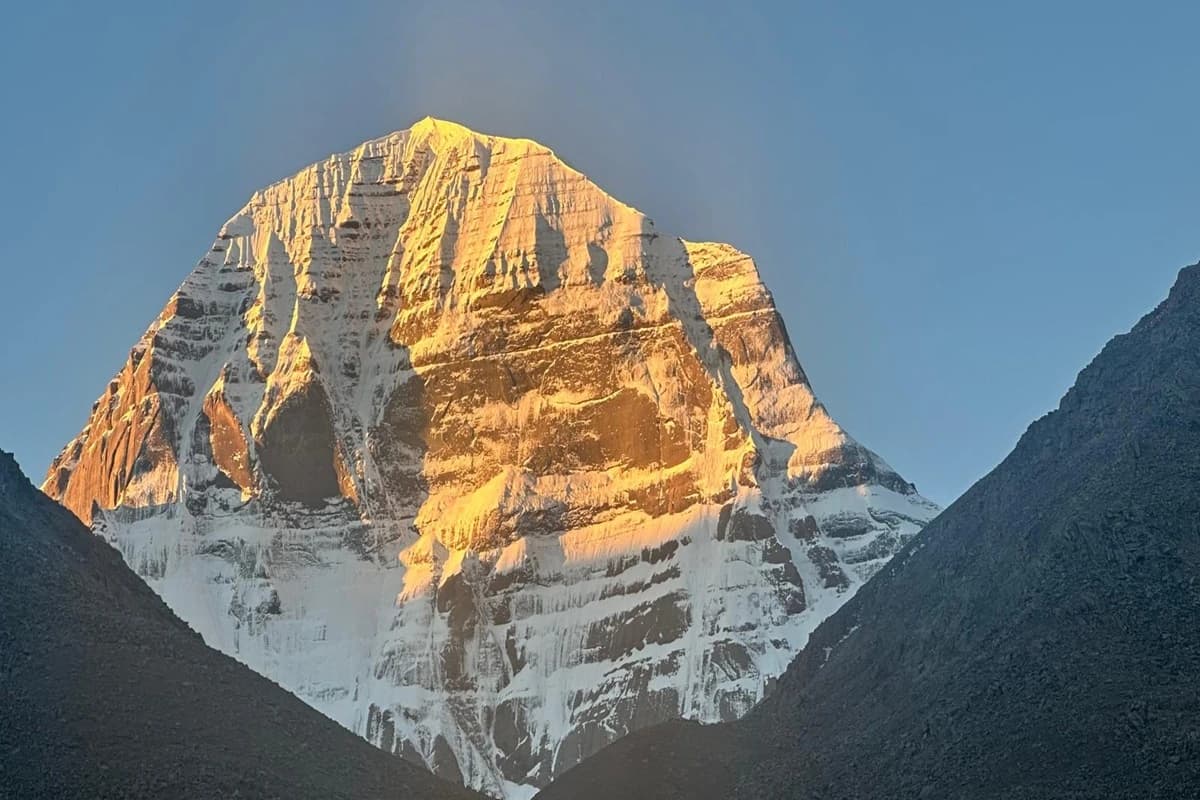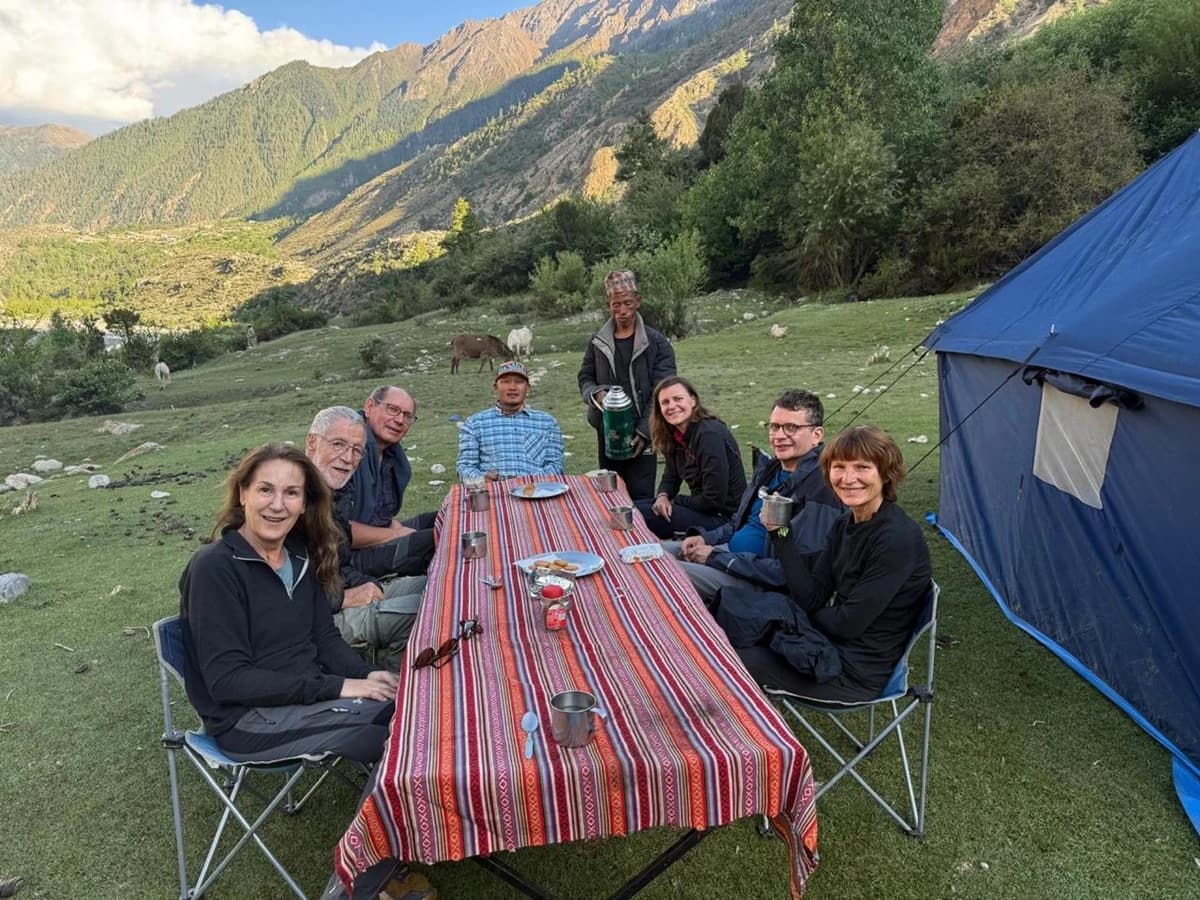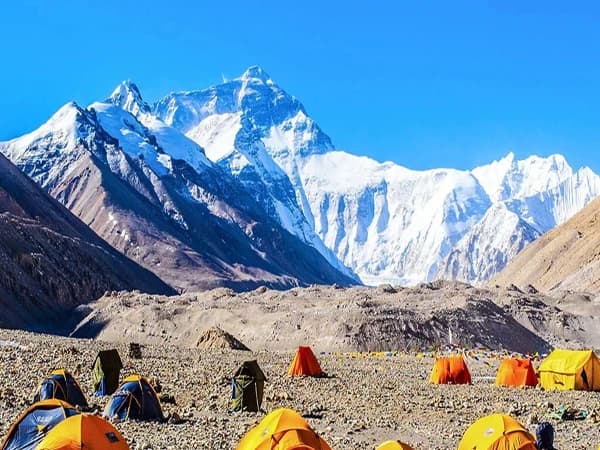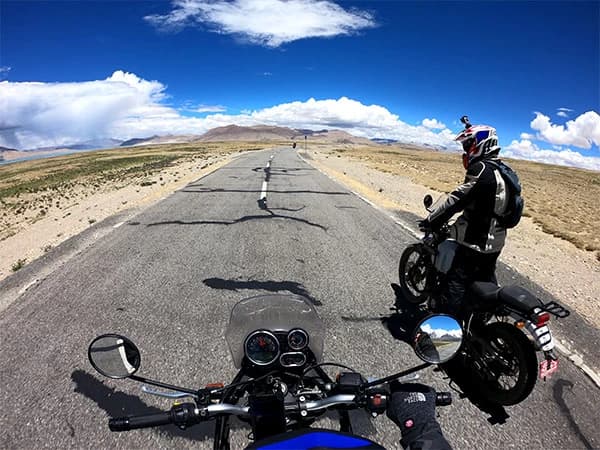Lhasa Tour with Rongbuk EBC and Kailash Tour 13 Days Package
The Lhasa Tour with Rongbuk Everest Base Camp and Kailash 12 Nights 13 Day is not only a tourism experience, but an utterly life-changing experience of the cultural core and spiritual inner soul of Tibet.
Since the moment when the travelers enter, they are swept by the eternal rhythm of Tibetan life when monasteries resonate with antique song and prayer flags fluttery in the wind of the Himalayas.
The 12 Nights 13 Days Lhasa, Everest Base Camp & Mount Kailash Tour relates the holy places, the mythical scenery, and the culture of the people who have managed to maintain their individuality over centuries.
The difference of this trip is that it is perfectly combined so as to have an immersion in the culture and at the same time the grandeur of nature. Tourists stroll up and down the corridors of the Potala Palace, walk around the holy Jokhang Temple, and observe philosophical dialects in centuries-old monasteries with Kailash & Everest Base Camp Tour from Lhasa Itinerary.
These experiences are not just tours, but close-up experiences about Tibetan Buddhism, and the spiritual worship that forms the foundation of day-to-day lives in the plateau.
Just as interesting are the sceneries, which change radically between lush valleys to dry plateaus, between blue lakes to the north face of Mount Everest.
There are not many trips on earth as varied as this one ie Lhasa to Rongbuk EBC and Kailash Overland Journey – 12 Nights, which has its climax in Mount Kailash and Lake Manasarovar, which are worshipped by the traditions of Hinduism, Buddhism, Jainism, and Bon. It is also an unmissable chance to follow in the footsteps of pilgrims who think that one kora around Kailash cleanses a lifetime of sins.
In addition to its spiritual significance, the Everest Base Camp & Mount Kailash Adventure via Lhasa Trip is also full of its adventure value and lovers of wild and remote nature. Far mountain passes, gold sunsets above snow-capped mountains, and utterly beautiful plateaus are a breathtaking background.
A Tibetan mile presents a new aspect of the natural landscape, which is usually accompanied by the appearance of nomadic herders, yaks wandering on open land, and animals living in such harsh conditions.
After all, the Lhasa to Kailash & Rongbuk Monastery Tour – 12N/13D trip is not just a trip, but it also provides a viewpoint. It instructs endurance in elevated places, encourages contemplation in sacred places, and everyone seeks to be in touch with the culture that dwells in balance with the austerity and magnificence of the environment.
This Lhasa with Rongbuk Monastery & Everest Base Camp Expedition – 13 Days Tour, as a pilgrimage or an adventure, is a journey that travelers will have the memories etched in their memories, just as the sacred mountains.
Key Highlights of Rongbuk EBC and Kailash Pilgrimage Tour from Lhasa – 12 Nights
- Sacred Mount Kailash Kora: Makes a pilgrimage trek around the auspicious Mount Kailash in a span of 3 days to absolve one’s sins and earn spiritual blessings said to be gained in the process of pilgrimage.
- Holy Lake Manasarovar: Experience the tranquil beauty of one of the holiest lakes in Asia, where worshippers perform rituals and take a dip for spiritual sustenance.
- Immerse yourself in culture by visiting Potola Palace, Dzhokhov temple, Barkhor Square, and Buddhist monasteries.
- Learn over the Buddhist culture, phenomenal artwork, and traditions of the monks in Drepung, Sera and other Buddhist monasteries.
- Appreciate the iconic Himalayan peaks and other landscapes as you traverse the high mountain ranges, plateaus, and yak pastures.
- Complete this cross-cultural experience with a spectacular descent that reveals the cultural differences of Tibet’s dry plateaus and highlands and the green valleys of Nepal.
Advantages of 12 Nights 13 Days Lhasa Everest Base Camp & Mount Kailash Tour With Dream Tibet Travel & Tours
- Local, Informed Staff: Our team throughout all of Nepal and Tibet consists of experienced Nepali staff who are the experts of the region. Founder Ram Lamichhane has over 15 years of experience working tour the Himalayas.
- Tibetan Partners You Can Rely On: Our trusted partnership with our inhabitants in Tibet will assist with planning logistics, taking care of the border expeditions, and permits needed for your trip.
- Commitment to Visa & Permit Management: We take care of visa applications and permits from the Chinese group visa, Tibetan Travel Permit, Alien Travel Permit, Military & Restricted Area permits for easy, stress-free travel.
- Flexible Itinerary for Small-sized Groups: The option of private journeys, small-sized group travel, and the willingness to build a detailed itinerary for your personalized travel needs.
- Reliable Customer Service: Based out of Kathmandu and with our staff on the ground, we offer a full round-the-clock customer assistance mindset throughout your time with us.
- Full range of trekking and pilgrimage logistics: To ensure your safety and comfort, we include professional guides, yak and cooking crew, camping gear, with high-altitude trekking equipment.
- Safety and Dependability: We not only send trained guides with years of experience who help you cross the Tibetan tundra, keep everything safe and worry-free, but we also have strict safety supplements and preventative measures, and processes throughout your journey in Tibet.
Lhasa EBC and Kailash Tour in One Single Itinerary in 2026 and 2026
A journey to Tibet is more than just a vacation with Rongbuk EBC and Kailash Pilgrimage Tour from Lhasa Package- it's a journey into one of the most unique and mysterious places on earth.
For centuries, trekkers, pilgrims, and the spiritually inclined have traveled from around the globe to experience its high plateau, snow-capped mountain range, ancient temples, and sacred sites.
This Everest Base Camp with Lhasa & Kailash Overland Adventure 12N/13D is just the absolute ideal way if you have ever dreamed of seeing the cultural center of Tibet and its most spectacular natural wonders in one consistent journey.
This wonderful Sacred Kailash & EBC Tour via Lhasa 13 Days itinerary is organized as a journey from Lhasa – Shigatse – Rongbuk (Everest Base Camp) – Saga – Mount Kailash. It meshes cultural experiences, high altitude adventure experiences, and spiritual exploration experiences together.
The best part? You don't have to do it in multiple or separate Itinerary. You will highlight central Tibet, the beauty of the Himalayas, and the spirituality of Mount Kailash, all in a complete journey.
Why Does This Itinerary Stands Out?
Visitors to Tibet frequently face a dilemma in terms of trip planning. Should they focus solely on a cultural Tibet / Lhasa itinerary? Or make a single reservation for an Everest Base Camp excursion? Or plan a separate booking for an alternative Mt. Kailash pilgrimage tour?
Most agencies set up these itineraries as separate outings to confuse travelers in terms of booking, or minimum make travelers change bookings altogether.
Nonetheless, with this Mount Kailash Yatra with Everest Base Camp & Lhasa – 12 Nights itinerary, the traveler won't have to choose between either. Instead, you get to experience
- Lhasa - the spiritual capital and the cultural heart of Tibet.
- Shigatse - the second largest city in Tibet, with its astounding Tashilhunpo Monastery.
- Rongbuk & EBC - the closest vantage point of Everest to the Tibetan Territory.
- Saga - a gateway town with cultural and rugged wildness (a lot of geographic beauty).
- Mt Kailash & Lake Manasarovar - the crown jewel of spirituality and Tibetan pilgrimage.
This means you can enjoy the best of Lhasa and Tibet in one single trip ie- Lhasa to Kailash Overland Tour with Rongbuk & Everest Base Camp – 13 Days without taking additional time or money, but still viewing all the quintessential sights of what it means to be in Tibet.
What Places You will be Visiting During Rongbuk EBC and Kailash Pilgrimage Tour from Lhasa – 12 Nights?
|
Place |
Key Sites / Highlights |
|
Lhasa |
|
|
Shigatse |
|
|
Rongbuk / Everest Base Camp |
|
|
Saga (and surroundings on the way to Kailash) |
|
|
Kailash Region (Manasarovar, Darchen, Kora Highlights) |
|
Lhasa
Lhasa is the spiritual heart and cultural center of Tibet. After a tour here that includes ancient monasteries, palaces, markets, and temple circuits, you will definitely feel the charm of it.
This is the place where you can fully enjoy Tibetan Buddhism by seeing the beautiful and artistic architecture, meeting the pilgrims, and getting a taste of local life at the high plateau.
Shigatse
Shigatse is located in Tibet and is the second-largest city in Tibet. Besides, it has been a vital location throughout history. This place is where the journey to Everest and Kailash starts.
One of Tibet’s very famous monasteries can be found in the city, and it is an excellent chance to witness the differences in Tibetan culture of the region as compared to Lhasa. There is also an opportunity for relaxation and the provision of supplies before reaching higher and more secluded places.
Rongbuk / Everest Base Camp (EBC)
Rongbuk Monastery is the most elevated location just near the north face of Mount Everest. Enjoying a stay at this place will enable you to have heavenly views not only of Everest but also of other major Himalayan peaks.
The Base Camp, with the power of such heights, lets one experience them very close - sunrise/sunset, amazing views, sight of glaciers, and a generally challenging Himalayan environment. So, you can have a close look at the Rongbuk Glacier, which is immense as well.
Saga
Saga is a high place situated in the direction of the Kailash area. It represents the point where the most crowded central Tibet gives place to Ngari (west Tibet), an area still unknown and far away.
The places will get more beautiful and wild. At Saga, the nomads' life and culture will become more visible; you will see the big plateau, small monasteries, lakes considered holy, and even the increasing feeling of being left alone and getting closer to the divine spirit.
Mount Kailash Region (Manasarovar / Darchen / Kora Route)
This is the divine center of pilgrimage: Lake Manasarovar, where the devotees bathe; Darchen, the starting point; and Mt Kailash "Kora" (circumambulation), high pass crossing, Dirapuk, Zuthulpuk, etc., stay.
The trek works hard on the body but is a very lovely, soulful experience, with peaceful moments, introspection, awe, and magnificent alpine and desert scenery.
Lhasa to Kailash & Rongbuk Monastery Tour – 12N/13D Cost 2025/26
Lhasa to Kailash & Rongbuk Monastery Tour - 12 Nights / 13 Days package cost is around USD 2,500-3,500/person (depending on season, number of people in your group, and accommodation).
We provide full support: full permit and paperwork necessary, transport, qualified guides, local accommodations, meals, medical & emergency support, oxygen support, logistics to Everest Base Camp & Kailash Kora, and assistance with visa and travel documentation.







